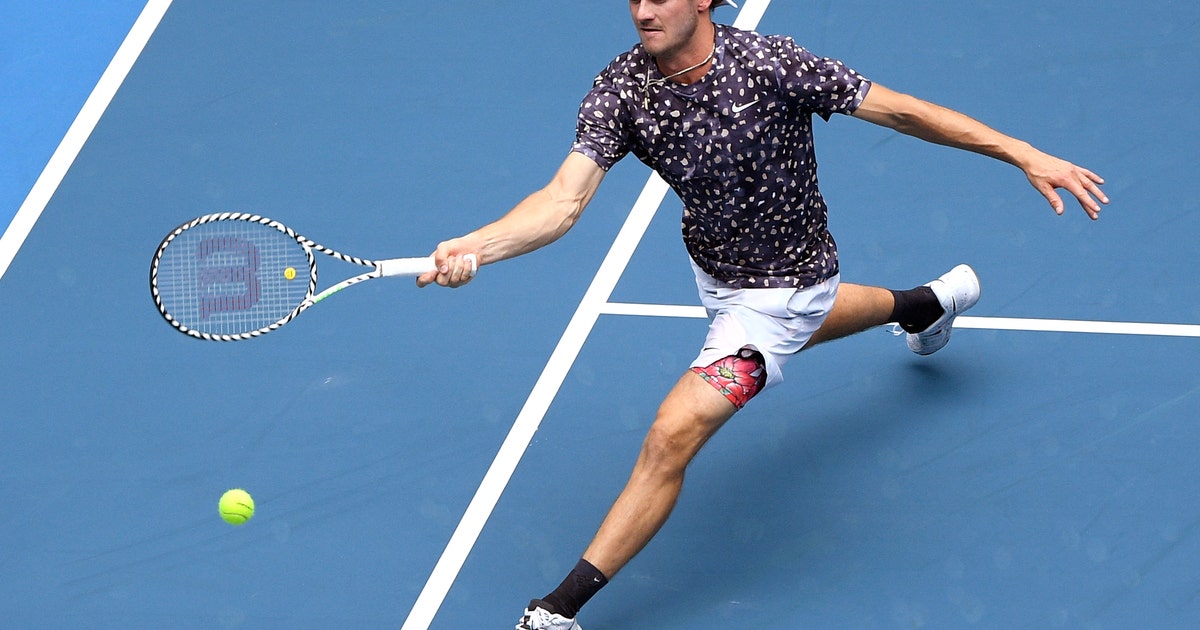Analysis: Tennis pros’ US return amid pandemic no true model


The four players sure seemed thrilled to be playing some tennis with some prize money (amount undisclosed) at stake amid the coronavirus pandemic — even if the court was near the backyard swimming pool at someone’s mansion and there were zero ATP rankings points on the line, zero locker rooms, zero spectators, zero ball kids and barely any officials.
Those starved for live sports on television got a chance to see a quartet of men ranked from No. 29 to No. 57 — even if the format was gimmicky, with no-ad games and first-to-4 sets.
And those in charge of organizing future tennis matches could observe the social-distancing and other precautions put in place at what was billed as the sport’s “first competition on U.S. soil between ranked players” since pro tennis was suspended — even if two participants drove to and from the match site together from the home they share.
Still, there was a key shortcoming to the made-for-TV matches involving Reilly Opelka, Tommy Paul, Hubert Hurcacz and Miomir Kecmanovic on Friday and Saturday in West Palm Beach, Florida, where a three-day event was shortened to two because of rain in Sunday’s forecast: It didn’t offer a true model for what real tennis might look like whenever the ATP and WTA tours return from an already months-long hiatus that will last at least until mid-July due to the COVID-19 outbreak.
“This is so different from a tournament,” Paul said in a telephone interview. “We have four people here and we’re taking everything super cautious and going to the extremes. I don’t know how they would do it with any more than four people.”
Although no one was required to be tested for COVID-19, Paul said he felt safe, thanks to measures intended to prevent the spread of the virus — measures similar to those tried elsewhere as tennis takes baby steps back.
Belarus and Germany have hosted unsanctioned matches; others are planned in Serbia and France. Matches in West Palm Beach involving four ranked women are scheduled for May 22-24. Rafael Nadal is among those wondering whether the tours will resume at all in 2020.
“We’re certainly paying attention to all of these type of exhibitions and other events that are starting to roll out around the world. You can learn from it,” U.S. Tennis Association spokesman Chris Widmaier said. “You want to see what proper safety precautions are being put in place. How the competition is being presented. Anything along those lines — in tennis or even any other sport — can be a learning experience for us when it comes to going forward with the U.S. Open Series or the U.S. Open.”
In West Palm Beach, where they played on a blue hard court surrounded by a chain-link fence, everyone onsite was supposed to have their temperature checked. Racket taps replaced post-match handshakes. Balls were marked with red and black circles so players would touch only the ones they served with. Cleaning crews wiped down the seats and net and scrubbed walls behind the baselines. Each player had access to his own tent when not playing. Hand sanitizer dispensers were attached to the sideline benches; Paul said he used some after his round-robin matches Friday. The only officials were a chair umpire and a line judge calling the service line from outside the fence while wearing gloves and a mask.
From afar, the sparse setting looked akin to something from the sport’s minor leagues or a practice session.
The Tennis Channel telecast felt at times like an infomercial for the unofficial rating system that sponsored the matches.
And there was no scoreboard, so Paul said he asked the chair umpire three times Friday to remind him where things stood.
What mattered to those involved, Paul said, was this: “It felt real in the way that I was playing and the way the players I played against did.”
“But,” he added, “it’s hard to still feel ‘real’ when you look around and there’s no one watching and it’s just at a private court at a house.”






